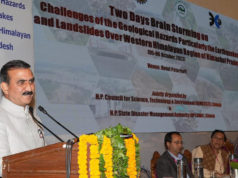In a move that has stirred debate, the Himachal Pradesh government has issued a notification introducing controversial amendments to the rules under the Town and Country Planning Act of 1977. These amendments focus on making attics habitable and permitting parking in basements, fulfilling promises made by the Sukhu-led state government during the recent Shimla Municipal Corporation (SMC) elections.
Fee Structure for Habitability: Charges Applicable for Habitable Attics and Independent Storey Basements
Under the new rules introduced by the Himachal Pradesh government, attics can now be utilized for residential and various other purposes. However, the utilization of habitable attics within a block will be subject to a fee. Additionally, habitable basements will be treated as independent storeys. If the intended use of the attic is non-residential, the fee imposed will be 1.6 times higher than the standard rates.
A significant aspect of these amendments is the implementation of a fee structure for attics that are deemed habitable. This fee structure serves the purpose of regulating the utilization of attics and ensuring compliance with building regulations. For residential purposes, the fee is determined based on the area of the attic. The fee structure is as follows:
Up to 40 square meters: Rs 50,000
40 to 60 square meters: Rs 75,000
60 to 100 square meters: Rs 1 lakh
Over 100 square meters: Rs 1,000 per square meter
Furthermore, for non-residential purposes, the fee for using attics will be 1.6 times higher than the standard rates. These fees are designed to promote responsible and regulated usage of attics while encouraging adherence to building guidelines.
Potential Impact on Height Restrictions and Floor Area Ratio
As per the amendment to Rule 16 of the Himachal Pradesh Town and Country Planning Rules, 2014, attics have now been officially authorized for habitable use. However, it is important to note that the height of the attic must not exceed the maximum permissible limit prescribed by the regulations outlined in the development plan or interim development plan, as specified in the notification.
In order to ensure adherence to the height restrictions, the notification provides comprehensive guidelines for the construction of habitable attics. According to these guidelines, the overall height of the building should not surpass the maximum permissible limit as determined by the development plan or interim development plan.
Moreover, the guidelines allow for flexibility in the height of the sloping roof at eaves, permitting variations ranging from 0 to 0.75 meters. The maximum height of the ridge at the center can also be adjusted, as long as it remains within the prescribed limit for the building.
Another key consideration outlined in the notification is the calculation of the floor area ratio (FAR) for habitable attics. Only the area of the attic with a clear height of 2.1 meters will be taken into account when determining the FAR. This provision ensures that the usable space within the attic is appropriately considered while maintaining consistency with the overall building regulations.
Controversial Amendments and the Risk of Unregulated Construction Practices
The amendments announced by the Sukhu-led state government have drawn both criticism and scepticism from various quarters. While the government claims that these amendments fulfil promises made during the recent Shimla Municipal Corporation (SMC) elections, there are growing fears that they could potentially lead to unregulated construction practices in the city. This raises concerns about the preservation of architectural integrity, environmental sustainability, and the overall urban landscape of Shimla.
Individuals and organizations can file objections or suggestions regarding the amendments, outlined in the Himachal Pradesh Town and Country Planning (Ninth Amendment) Rules, 2023, within a one-month period.













